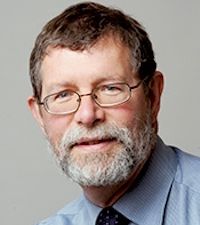Article
Socioeconomic Status, Racial Disparity at the Heart of US Pollution
Author(s):
From food deserts to hazardous jobs that inhibit exposure and limit the means to prevent it, people of low SES are at greatest environmental health risk.

John R. Balmes, MD
Environmental health in the US is far from indiscriminate. In fact, John R. Balmes, MD, would believe that it’s a very common fact that people of color and lower socioeconomic status (SES) endure a greater prevalence — and worse clinical outcomes — of harmful pollution.
Presenting at the 2018 American Thoracic Society (ATS) International Conference in San Diego, CA, Balmes, from the University of California, San Francisco and Berkeley, reviewed the factors that inhibit racial- and SES-associated disparities in environmental exposures and lung health. The details ranged from clear, common facts to minute intricacies.
Balmes first established that people of color and low SES not only have greater outdoor air pollution exposure rates in the US, but a disproportionate proximity to land pollution and toxic emissions. He shared a colleague’s mapping of how inequality — both positive and negative for the individual — drives the share of environmental hazard to a significant rate of low SES persons versus a small faction of high SES persons.
A major driver of this difference is the work force, Balmes said. He pointed to the ATS Board of Directors’ own official statement in June 2002 which first established that occupational exposure accounts for approximately 15-20% of the population’s burden of asthma and chronic obstructive pulmonary disease (COPD).
Occupations with hazardous pollution are almost exclusively held by people of low SES — and are performed almost exclusively near low-SES communities.
“They don’t put power plants in fancy neighborhoods,” Balmes said. “Rich people generally don’t live next to a port.”
For as many health-damaging factors poor communities are exposed to, there’s also an issue of significantly fewer health-promoting amenities. Balmes pointed to the “food desert concept,” the researched concept that poorer areas in the US have less access to fruits and vegetables. Such foods are antioxidant-rich, Balmes said, which could improve a person’s protection from ambient air pollution effects.
Balmes also pointed to the effects of “dirty jobs” in the US — both their direct effect on the lung health of workers, the disproportionate rate of minorities who work them, and the inherent burdens that come with the work.
Though this disparity is common in most developed countries, Balmes used an example of an illegal immigrant in California who works as a day laborer. Their daily exposure to harmful vapors, gas, dusts, and fumes is as debilitating as the stress they endure from such work — and the stress driven by the factors of their livelihood.
“Psychosocial stress is probably an enhancer of the effects of pollution and occupational exposures on respiratory health,” Balmes said.
Other factors that drive the disparity are intrinsic, such as in utero and early-life exposures to pollutants and stressors, or genetics risks of developing asthma, COPD, or obesity. Others are extrinsic, such as a more frequent and early exposure to violence driving stress, and a lack of community-based resources to address such issues. Balmes noted the exposures to both family stress and violence have been found to increase the effects of traffic-related air pollution on children with asthma.
What the US is eventually addressing is a self-supporting system of environmental health disparity.
“The economic system in this country actually perpetuates environmental equality,” Balmes said. “And the people that are best able to protect themselves from air pollution — either by buying a clean motor vehicle or living in a nice, clean neighborhood — set the rules. They have the political power that keeps the folks that are poor and of color with greater environment exposures.”
Balmes called for research into biomarkers and mechanisms that drive air pollution-stress interactions, and more means to characterize and model the relationship between environmental hazards and people of color and low SES in the US.
“Just looking at the air pollution exposures, just looking at the occupational exposures, without taking into account both intrinsic and extrinsic factors, I think we really miss the boat,” Balmes said.
Click here to sign up for more MD Magazine content and updates.
Related Coverage >>>
Mediterranean Diet Limits Deaths Associated with Pollution Exposure
Acute Blood Allergy Testing Associated with Fewer Pediatric Asthma Hospitalizations
Prenatal Vitamin C Can Protect Infants' Lungs from Mother's Smoking Habits





